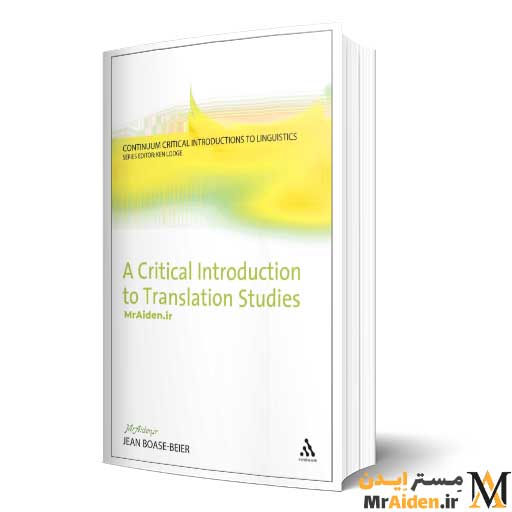
۲۵.۰۰۰ تومان
در ادامه شما میتوانید نسخه انگلیسی و PDF کتاب A Critical Introduction to Translation Studies نوشته Jean Boase-Beier و Andreas Musolff را تهیه و دانلود کنید.
مقدمه انتقادی ژان بواس بییر بر مطالعات ترجمه، درک دقیق ترجمه نظری و عملی را نشان می دهد. به نظر مواردی است که ترجمه ممکن است ساده نباشد، جایی که سبک شناسی نقش مهمی ایفا می کند. نمونههایی از آثار ادبی، تبلیغات، روزنامهنگاری و موارد دیگر مورد بحث قرار میگیرند، جایی که تأثیرات روی خواننده در متن اصلی است و در سبک منعکس میشود.
با بیان برخی از مشکلات و مسائل اساسی که در مطالعه ترجمه مطرح می شود، آغاز می شود، مانند: تفاوت بین ترجمه ادبی و غیر ادبی; نقش زبان، محتوا و سبک؛ مسئله کلیات و ویژگی های زبان و مفهوم زمینه. سپس کتاب بیشتر بر سبک تمرکز میکند و این که چگونه ما را قادر میسازد متون ادبی و ترجمه ادبی را توصیف کنیم. بخش پایانی به ترجمه شعر می پردازد. در سراسر، از رابطه بین نظریه و عمل در ترجمه آگاه است.
این کتاب رویکردی جدید به ترجمه را ارائه میکند که مبتنی بر سبکشناسی است، و منبع ارزشمندی برای دانشجویان کارشناسی و کارشناسی ارشد خواهد بود که به مطالعات ترجمه نزدیک میشوند.
Jean Boase-Beier’s Critical Introduction To Translation Studies demonstrates a keen understanding of theoretical and practical translation. It looks to instances where translation might not be straightforward, where stylistics play an important role. Examples are discussed from works of literature, advertisements, journalism and others, where effects on the reader are central to the text, and are reflected in the style.
It begins by setting out some of the basic problems and issues that arise in the study of translation, such as: the difference between literary and non-literary translation; the role of language, content and style; the question of universals and specifics in language and the notion of context. The book then goes on to focus more closely on style and how it enables us to characterise literary texts and literary translation. The final part looks at the translation of poetry. Throughout, it is conscious of the relationship between theory and practice in translation.
This book offers a new approach to translation, grounded in stylistics, and it will be an invaluable resource for undergraduates and postgraduates approaching translation studies.
۵ مطلب اخیر از این قسمت برای شما در دسترس است
دیدگاهها
هیچ دیدگاهی برای این محصول نوشته نشده است.